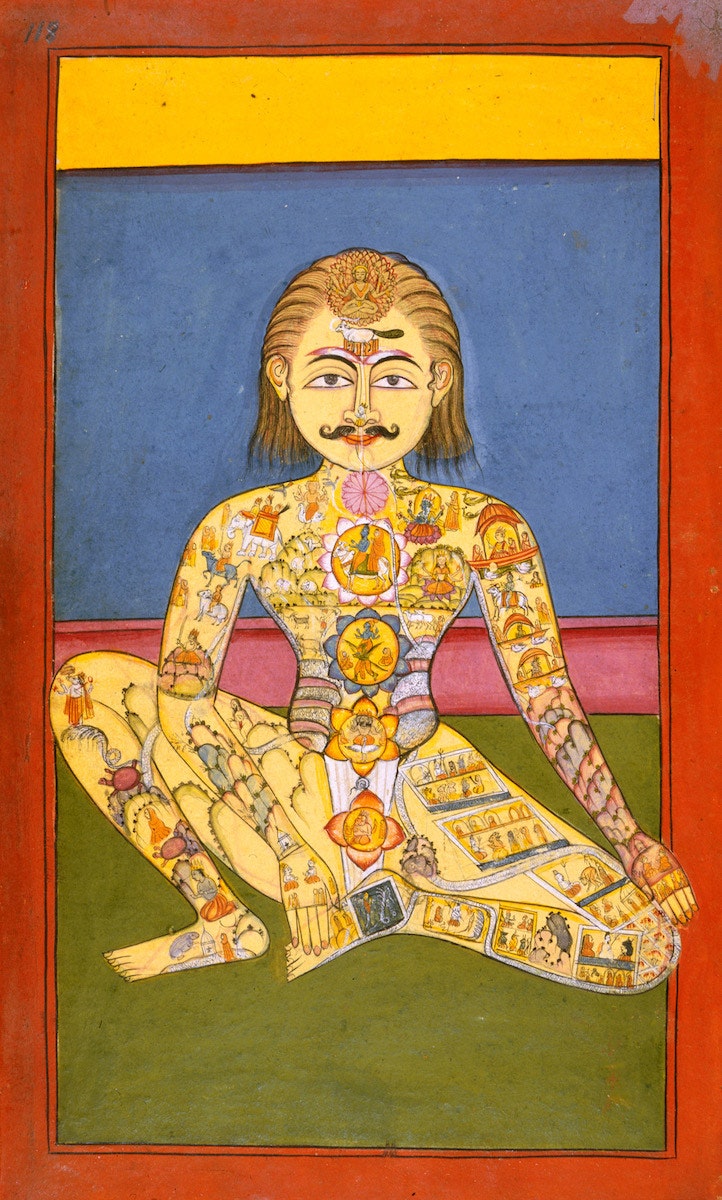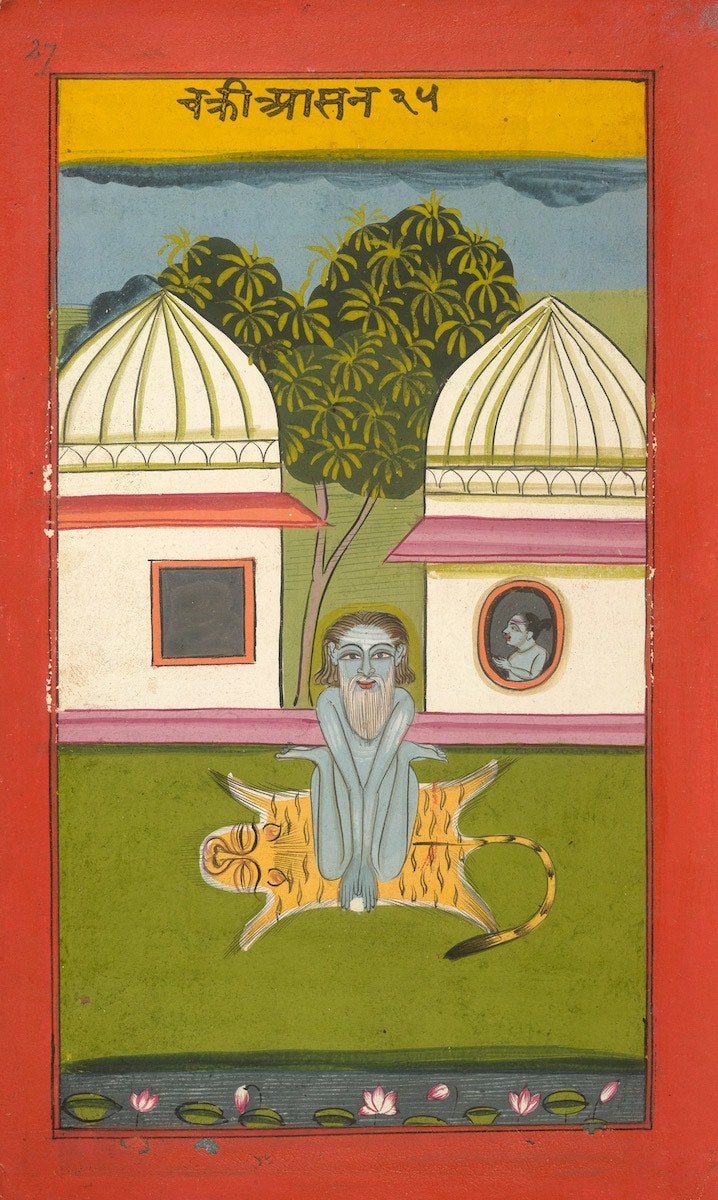
Yoga as an athletic series of postures for physical health came into being only about 100 years ago, part of a wave of gymnastics and calisthenics that spread around the Western world in the 1920s and made its way to India, combining with classical Indian spirituality and asanas, a word which translates to “seat.” Yoga, of course, had existed as a classical spiritual discipline in India for thousands of years. (The word is first found in the Rig Veda), but it had little to do with fitness, as yoga scholar Mark Singleton found when he delved into the roots of yoga as we know it.
Asana practice was often marginal, even scorned by some 19th century Indian teachers of high caste as the domain of “fakirs” and mendicant beggars. “The first wave of ‘export yogis,’” writes Singleton, “headed by Swami Vivekananda, largely ignored asana and tended to focus instead on pranayama [breath practice], meditation, and positive thinking…. Vivekananda publicly rejected hatha yoga in general and asana in particular.”
In the 20th century, yoga became associated with Indian nationalism and anti-colonial resistance, and imported Western poses were combined with asanas for a program of intense physical training.

Westernized yoga has obscured other traditions around the world that developed over hundreds or thousands of years. For his book with James Mallinson, Roots of Yoga, Singleton consulted “yogic texts from Tibetan, Arabic, Persian, Bengali, Tamil, Pali, Kashmiri, Old Marathi, Avadhi, Braj Bhasha, and English,” notes the Public Domain Review, who bring our attention to this early 19th-century series of images from a text called the Joga Pradīpikā, made before classical yoga became known in the west by adventurous thinkers like Henry David Thoreau.

A few millennia before it was the provenance of lycra-clad teachers in boutique studios, asana practice combined rigorous, often quite painful-looking, meditative postures with mudras (“seals”), hand gestures whose origins “remain obscure,” though yoga historian Georg Feuerstein argues “they are undoubtedly the products of intensive meditation practice during [which] the body spontaneously assumes certain static as well as dynamic poses.” The collection of drawings in the 118-page book depicts 84 asanas and 24 mudras, “with explanatory notes in Braja-Bhasha verse,” notes the British Library, and one image (top) related to Kundalini yoga.

Whatever the various practices of yogic schools in both the Eastern and Western world, “the methods and lifestyles developed by the Indian philosophical and spiritual geniuses over a period of at least five millennia all have one and the same purpose,” writes Feuerstein in his seminal study, The Yoga Tradition: “to help us break through the habit patterns of our ordinary consciousness and to realize our identity (or at least union) with the perennial Reality. India’s great traditions of psychospiritual growth understand themselves as paths of liberation. Their goal is to liberate us from our conventional conditioning and hence also free us from suffering.”

Under a broad umbrella, yoga has flourished as an incredible wealth of traditions, philosophies, religious practices, and scholarship whose strands weave loosely together in what most of us know as yoga in a synthesis of East and West. Learn more at the Public Domain Review, and have a look at their new book of historic images, Affinities, here, a curated journey through visual culture.





Related Content:
How to Get Started with Yoga: Free Yoga Lessons on YouTube
How Yoga Changes the Brain and May Guard Against Alzheimer’s and Dementia
Sonny Rollins Describes How 50 Years of Practicing Yoga Made Him a Better Musician


Article curiously omits mention of the most seminal ancient text on yoga which is Patanjali’s YogaSutra. Incidentally, Swami Vivekananda published his comments on it.
Is it ignorance or deliberate omissions… Both are condemnable in the context of expertise claimed by author.
The western so called writers or authors are working on conspiracy to connect Yoga to the western culture as if it was their own discovery! they are trying to isolate Yoga from Indian culture. They have given the different names to our original Yoga poses and these names are ridiculous.
They feel inferior to tell India as an origin of Yoga.
Over the few years, the “Yoga Industry” Has grown about USD 95 Billion.